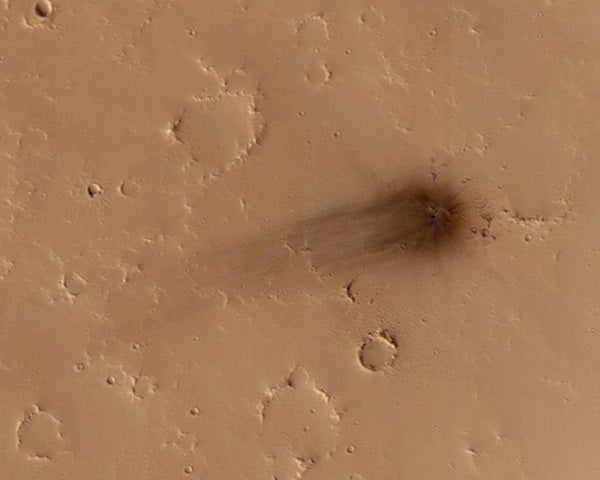At the time, astronomers suspected that organics were hitchhiking to Mars almost exclusively aboard tiny, interplanetary dust particles (which are incredibly common and cause most meteors here on Earth). But now, just three short years later, new research suggests otherwise.
In a new study set for publication on July 15 in the journal Icarus, an international team of researchers found that about one-third of the organic material on Mars was delivered there by asteroid and comet strikes. To determine this, the researchers created a computer model of the solar system that included hundreds of thousands of asteroids and comets. Then they used Peregrine — a supercomputer at the University of Groningen in the Netherlands — to run multiple simulations.
After running the simulations for a few weeks, the researchers were surprised to find that comets and asteroids are likely responsible for about one-third of the 192 tons of carbon that plummets to Mars each year. More specifically, they found that asteroids deliver about 50 tons of the organic material per year (26 percent), while comets account for around 13 tons (7 percent).
These findings also fit in neatly with the recent discovery that organic molecules make up nearly half of Comet 67P, which was visited by the Rosetta spacecraft in 2014.
The new findings not only have implications for future Mars missions, but also for exoplanetary research. According to Kateryna Frantseva, a Ph.D. student at the University of Groningen and lead author of the study, in a press release, “Near other stars, there are also exo-asteroids and exo-comets that can shower the surfaces of exoplanets with carbon. If, on top of that, there is water, then you have the required ingredients for life.”
Though we are a long way off from scouring the surfaces of exoplanets for carbon, one of the main goals of the recently delayed James Webb Space Telescope will be to study the atmospheres of exoplanets. But, until then, the researchers plan to turn their focus to Mercury, where they hope to reveal how much water has been showered upon our solar system’s smallest, innermost planet.











